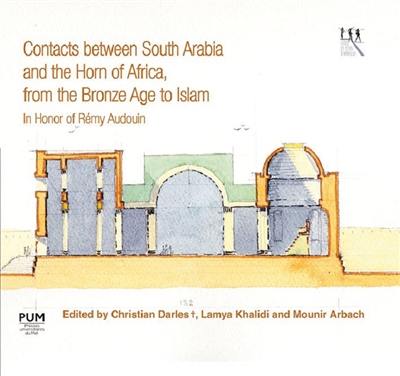
Fiche technique
Format : Relié
Nb de pages : 343 pages
Poids : 1252 g
Dimensions : 25cm X 22cm
ISBN : 978-2-8107-0726-3
EAN : 9782810707263
Contacts between South Arabia and the Horn of Africa, from the bronze age to islam
in honor of Rémy Audouin
Quatrième de couverture
Over the course of a millennium and a half, from the Bronze Age to the advent of Islam, the Red Sea was a threshold between the Arabian Peninsula and the Horn of Africa. From the Nile Valley to the Arabian Desert, influences, wealth, craftsmen, patterns and ideas circulated, accompanying caravans and travelers. Long-distance navigation was accompanied by cabotage from port to port demonstrating the extent to which seas are corridors rather than borders. Following the example of Abraha - a high-ranking military officer from the kingdom of Aksum on the African side of the Red Sea - who in the middle of the 6th century ruled over Yemen and extended his power over the entirety of the Arabian Peninsula, trade flowed in both directions. The extravagant church that this Christian sovereign erected in his Yemeni capital Ṣan a is still the subject of discussion among scholars. This book features the work of archaeologists, philologists and epigraphists, and is a rendition of the 21st Rencontres sabéennes which took place in Toulouse in 2017 and was devoted to the theme of « Relations between South Arabia and East Africa - from the Bronze Age to the advent of Islam ». These contributions accompany a collection of moving tributes dedicated to the memory of Rémy Audouin (1935-2016) (Hommage à Rémy Audouin, Editions CEFAS 2020), who devoted his life to the archaeology of South Arabia and Ethiopia.





